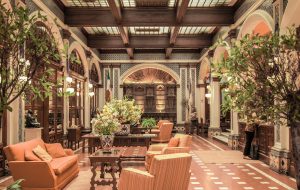Hotel visitors today are difficult to please. Their expectations are not easy to achieve. Their tastes are different from each other. When looking for luxury accommodation in Hobart for example, customers are not just looking for the basics; they want more, a story and elegant design are some components.
They are figuring out how to anticipate exceptional experiences in rooms that motivates them with unique characteristics and astounding highlights that offers everyone the feel of a home. Designers need to adjust these extremes to serve complex hotel visitors.
Trends in hotel designs:
Homeliness:
Started by extended stay hotel, the idea of adding kitchenettes and various luxuries to welcome guest in long-term stay has picked up the footing in the hotel business and is rapidly turning into a standard. While the times of having the same layout and furniture in each room are numbered as hotels settling on making each room unique for a more characteristic and accommodating feel.
By planning varieties in designs and including different components all through the rooms, for example, handmade decors, unique surfaces, blending and matching furniture, various wall tiles — hotels can give guests a more customised and new experience that they will appreciate and remember.
Going Green:
More hotels today are reusing towels and introducing automated lights to be more energy efficient, others are taking energy efficiency and sustainable than ever before.
A year from now we’ll have more renewable, eco-friendly procedures that help sustainability and link guests to the local culture and history, natural lighting, solar panels, reused wood, organic materials, hourglass clocks in showers, privately handcrafted things and furniture that were repurposed from other things.
Indoor/outdoor hybrid spaces:
Decorators keep on blurring the lines of inside and outside areas, particularly in Caribbean hotels where these spaces stream together. Indoor water cascades, staggered porches, primitive wooden decorations, walled gardens, flawless vegetation and all scenic views make guests be one with nature from the security of indoor-open airspace and experience something uncommon, genuine and unforgettable.
Technology is one approach to enhance the experiences of the guests, so technology is influencing the design in a significant way. For instance, with the online registration, they are no longer required to have large reception areas, giving decorators more room for decorating the lobby.
In smart hotels, customised tablets could command everything from the temperature of the rooms to ordering room service. Text messaging is taking over landlines. Rooms have video streaming services like Netflix and Apple TV. Wi-Fi network connections inside and outside the offices. In a few hotels, Li-Fi (connecting to the internet using lights) is taking over Wi-Fi.

Telling a Story Through Design:
In the next few years, the idea of storytelling hotels will begin to become famous; designs will rely upon to move from the presently profoundly different illustrations to the more visually pleasing components, while surfaces will go from delicate and rich woven textures into more substantial, lavish velvet. Hope to see common materials, cool colours streaming into warm ones, neutral hues and metal coatings.
A blend of modern styles will deliver changing, playful conditions, compelled by narrating a story that is incorporated all through the decorations which make the authentic and inviting encounters that visitors, particularly those in middle age ones, look for.
Urban Art and Personality:
Not until recently, the word “graffiti” used to bring out pictures of exteriors of old buildings, walls, train cars being skinned with spray paints. However, these days more industry like hotels are adopting the urban or street art and fusing it into their exhibition walls to add characteristics and uniqueness to their lodgings.
Nowadays, customers are focusing on what separates one item, service or brand from the rest. The same isn’t ideal. A local artists’ graffiti can present strong visual expressions, modify the disposition or demeanour of business, draw more guests and communicate with society in the area as well as be acting as a museum display for guests to enjoy.
Nature Inspired Design:
Nature inspired hotels are effectively and gracefully connected to their environment. These hotels amaze visitors with astounding sceneries and one of a kind style components that shape their facilities to get a sensational and unforgettable experience. It is not a big surprise they are favourite.
To connect hotels with their surroundings, designers need to keep on looking to the natural environment for ideas and construct humble structures to mix in with to its immediate environment.
Meeting Spaces:
Gatherings are no longer what they used to be. Innovations have changed the conference meetings, and spaces have needed to adjust appropriately. Numerous big names on hotel industry rely on gatherings and conferences for profits; So, a well-made conference area is necessary.
Hotel conferences spaces have to have the correct audio, video systems and equipment for different types of conferences —from conventions to live performances, panel meetings and other large parties. Everything that can be used in these spaces—furniture, media equipment, dividers, walls —must be either portable or modular. Accordingly, decorators need to plan for flexibility, adaptability and connectivity.
Luxuries:
Hotel layouts will keep on moving past the absolute visual to end up less about having a beautiful space and more about feeling satisfied. Outstanding services and accommodation have developed becoming a luxury like fancy things. Hotel spaces and furniture can be laid out to look luxurious as well as to feel lavish.
